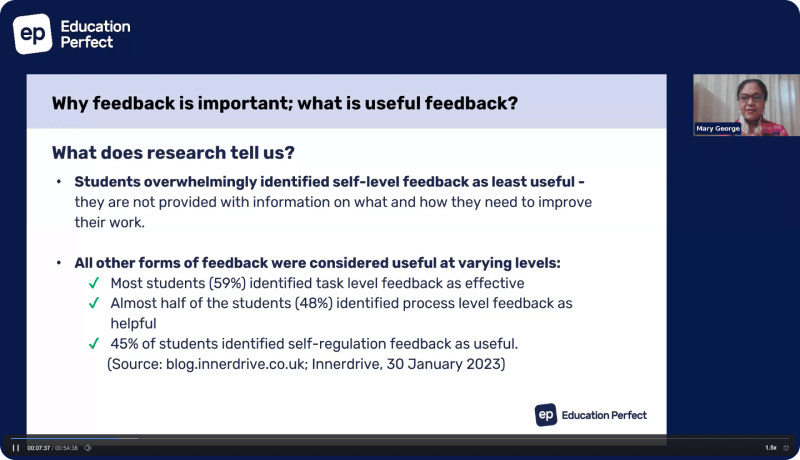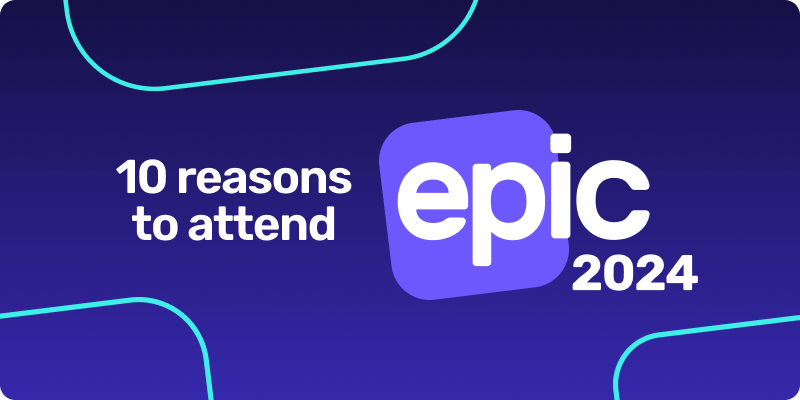Student voice and how feedback fosters progress

Why do teachers need feedback?
Teachers are not strangers to the idea of giving feedback to their students. We do this daily through discussions, regularly asking questions and responding to student answers or in a more structured and formalised manner through summative and formative assessments.
However, to really improve learning for our students, it is important to remember that feedback is not just a one-way process from the teacher to the student.
Teachers constantly gather data about the progress, level of understanding and engagement of their students. We may do this incidentally through general classroom observation and informal conversations or in a more organised manner such as exit passes. Many schools encourage departments to send out end of semester or end of year surveys to gain insights into students’ perceptions about the teaching programmes.
Research reminds us of the underlying reasons why student feedback is so important.
- Students learn better when they are partners in the educational process. When students have a voice they take ownership of their own education and work with teachers to enhance, deepen and support their own learning.
- Classroom teaching can be more effective when students are engaged as collaborators rather than receivers of information. In the spirit of creating a “community of learning”, feedback from our students is a powerful opportunity for teachers to reflect and modify their teaching and create a learning space that is personalised to the needs and strengths of the students.
- Engaging student voice increases students’ leadership abilities and can build their collaboration skills. Teachers are in a position to model how best to seek feedback and respond appropriately. Giving good feedback is a skill students need to develop and teachers are in a position to help with this.
What sort of feedback do I need?
Starting with the question ‘What feedback do I need?’ can help teachers to not only decide which format to use to collect their data but can also focus our thinking around what is the primary purpose of this data collection and what am I going to do with the data.
Students have first-hand experience and in-depth views of how their teachers educate and engage their classroom, and these perceptions can be collected quickly and regularly. This could be achieved during a lesson with a simple thumbs up or thumbs down at the end of an activity, or via an exit pass printed with 3 emoji faces that they need to circle on their way out. There are many tools available that can easily give teachers an opportunity to make real-time adjustments to their teaching. Frequent, quick, informal questionnaires can also allow students to become accustomed to providing feedback, and may be easier for students to complete than longer surveys.
Feedback can also focus on students’ level of understanding or level of confidence towards a new concept being covered. This type of data would be particularly important to collect as students begin to return to the classroom as schools reopen or to create a benchmark at the start of a new academic year. Presently around the globe, students and teachers are collectively concerned about potential gaps in knowledge or whether students will reach the desired outcomes by the end of the academic year. Using diagnostic tests, quizzes or check-in activities could be a useful way to gain an understanding of areas for focus for when students are back in the classroom but also it could provide the needed confidence and reassurance that students are actually OK.
How can I use this in my classroom – face to face or online?
When teachers create a positive culture of feedback, you are sending a strong signal to students that you care about their point of view. But for this to work effectively, a culture of trust must be developed first and students need to know they can be honest without ‘getting in trouble’. In addition, students might be unfamiliar with the role of meaningful feedback, so when students are suddenly asked to rate a lesson or give feedback they tend to skip the opportunity.
Before administering any surveys, express to students that you as a teacher can only improve if their answers are honest and constructive. Relay directly that this feedback is important to you and that you appreciate their ideas. And after collecting their answers, share some of the findings with the class and take the time to address what you can and cannot change. There is nothing worse than being asked for your opinion, giving it and then being ignored.
At the same time students may also need to be explicitly taught how to give effective feedback. Maybe start with simple questions and move to more difficult ones as they become more effective in communicating. If asking for longer responses, it might be helpful to give sentence starters that can help students to learn how to give precise, constructive feedback, and hopefully you won’t then get lots of ‘the lesson was good thanks’.
In the current climate of remote learning, it is important to consider that these evaluations should also be collected online. However, given the speed at which teachers and schools moved into online teaching, gathering student feedback in a regular manner may have been forgotten. In the past we have been able to gather this data through classroom observations and it may not be common practice for teachers to explicitly incorporate such feedback into their lesson. Yet research recently conducted by Pivot Professional Learning tells us now more than ever that student feedback is invaluable.
Many of the classroom practices can be transferred to the online situation, we just have to remember to do it. And some online platforms have built in opportunities where students are encouraged to give feedback. However, I have found that only a small number of students actually provide feedback that is useful for improving my teaching. As teachers foster classroom culture which values and supports students giving feedback, students would be more likely to engage in these opportunities and hopefully provide constructive feedback about the online activity or lesson as well.
Lastly, the question remains – What can I do with the data now that I have it?
If the data is centered around learning preferences or level of understanding, this would be powerful evidence to program and scaffold the delivery of your lesson and activities to tailor for the unique group of students in your classroom. The data that I would gather from the regular exit passes or quick quizzes each Friday afternoon would help me to plan out the following week’s lessons. The data allowed me to differentiate and personalize the learning for my students and the groupings and activities regularly changed in response to this data.
As the collaborative culture of the classroom grows through effective feedback practices, other forms of feedback can start to be encouraged. Peer feedback can be a very powerful element in formative assessment or the drafting process. Students benefit not only as being the reviewer of other people’s work but in also receiving feedback from their peers.
And of course with feedback from students, teachers are able to grow as educators and further develop their practice in ways that are meaningful and this will have a direct impact on those that matter most to us – our students.



